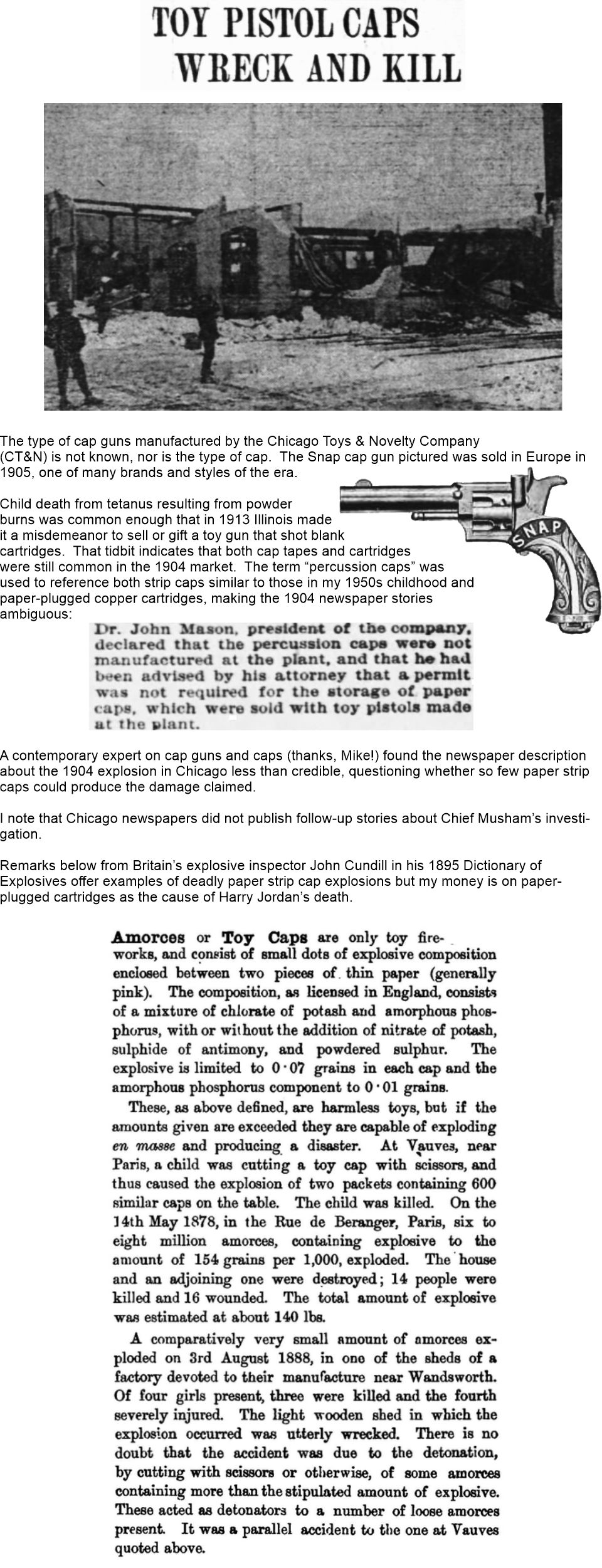|
Louisa testified at the coroner's inquest in
January 1904. She had attended the Mr. Bluebeard matinee
with an unidentified companion.* Having arrived late, they had to find their own way
to their seats in the third-floor gallery, site of the greatest proportion of fatalities.
When they spotted flames in the stage curtain Louisa and her companion responded quickly and were
able to exit the auditorium from doors
#38 or #39 before the doorways
became impassable.
As she descended the stairs the terrified crowd knocked Louisa down and over a railing. The somewhat fortuitous
tumble may have given her an advantage of a few feet and seconds ahead of hundreds of other people racing
to the front exits.
Upon reaching the lobby, within fewer than twenty feet from the sidewalk outside, her
escape was impeded by locked glass doors (#10, #13 & #16). These were broken open by multiple helpful passersby but since
virtually everyone who made it to the lobby survived, there was a disproportionate amount of testimony about
the lobby doors. The doors were locked to prevent petty thieves and freeloaders from entering the theater. (Theater
goers were so prey to pickpocket thieves in the area that police had to chase them off while bodies were being removed from the Iroquois.)
|

|
Married around 1870, Louisa was the wife of German emigrant, Charles Abstein (1834–1917)
and the mother of dentist Dr. Charles E. Abstein (1878–1964). In 1903, and for many years before and after, the family
lived at 721 Sedgwick in Chicago's Lincoln Park neighborhood (later renumbered 2119 Sedgwick).
One contemporary realty source reports the
3,100-sq. ft. home was built in 1904 but according to Chicago city directories and the 1900 and 1910 U.S. Census, the Abstein family
lived there at least as early as 1900 and when Charles purchased the property for $3,850 on October 20, 1884 it was described as improved,
suggesting the original structure was rebuilt in 1904. I found nothing, however, to explain how Charles, who typically worked as a
freight clerk, was able to afford a three-story twenty-one unit apartment house.
In addition to Charles Abstein jr, Louisa had an daughter, Lillie Sophia Abstein (1871–1891) who died months after her marriage and birth
of one child. Her husband Harry F. Jordan passed in 1904 in an explosion at a Chicago toy factory. See below.
|
|
Harry Fredrick Jordan (c1868–1904), Louisa's son-in-law, died in an explosion at his employer's factory in Chicago on March 15, 1904. The Chicago
Toy and Novelty Company manufactured cap guns in its facilities on the second floor of a building on 18th and Western. Early that morning Harry accidentally
dropped a bundle of toy rifles onto the company's stock of sixty gross of paper caps. The caps exploded, taking off the 2nd floor and started a fire that destroyed the
30' x 100' structure. Three employees were killed, including Harry, and eight were injured, including his sister, May Jordan. Harry's body
was recovered a hundred feet away after being blown through a window.
The company's owners had previously assured city inspectors that explosives were not used in their operation and would later say
they'd been advised by their attorney that paper caps did not require a special permit.
Chicago Toy and Novelty had been incorporated in April, 1903 by Charles Schaack, George Patscker and Emil Schintz. It's president was Dr. John Mason.

|
|
|
Discrepancies and addendum
* Newspapers did not report whether her
companion survived or was with Louisa during her escape from the theater.
Note: Previously I misidentified Louisa's husband and children, reporting that she was married to Peter Abstein who died in 1900 and was also married
to a woman named Louisa. Louisa's story is more accurate now but minimal. Her testimony relative to her escape from the Iroquois Theater was the sole attention attracted to the family. Had Witness Protection existed in 1903 I'd swear they were in the program.
|
